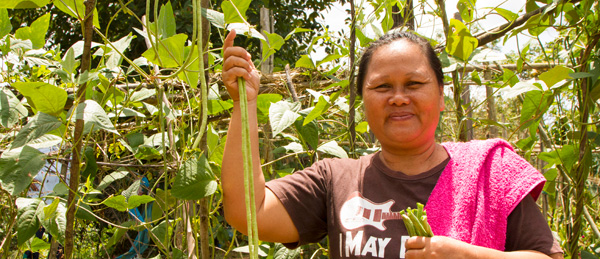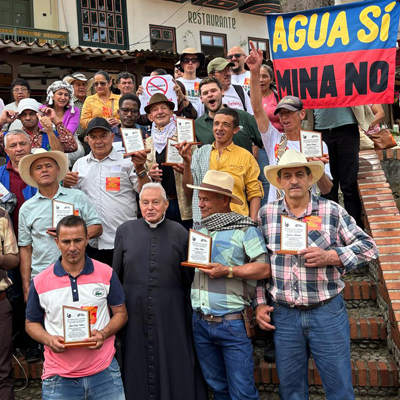First draft of the United Nations Global Biodiversity Framework is out
“We still have a long way to go” to halt the destruction of nature, says Nele Marien, Forest and Biodiversity Coordinator at FoEI

The UN Convention on Biological Diversity (CBD) has released the first draft of its global action plan that aims to halt biodiversity loss by the end of the decade. The Post-2020 Global Biodiversity Framework draft 1 was presented on 12 July 2021 and will undergo further refinement during online negotiations in the coming months. Thereafter, it will be submitted for consideration at the next Conference of the Parties (COP15) of the CBD taking place in Kunming, China, next October.
“Draft 1 is in many ways very similar to the previous draft (known as Draft Zero). It has the same structure and most issues have not changed substantially,” stated Marien in an interview with Real World Radio.
The new Global Biodiversity Framework was supposed to be approved in October 2020, but the Summit was postponed due to the Covid-19 pandemic. Negotiations, therefore continued online, which created many challenges. According to Marien, these negotiations have been “very unfair in terms of participation, with impossibilities for all parties, all governments to participate, but also for civil society. We could not be properly heard and it has been a very difficult process.”
The new version of the Global Biodiversity Framework proposes 21 targets and 10 milestones to reach by 2030, including protecting at least 30% of land and sea areas; a 50% reduction in the rate of invasive species introduction; reducing the loss of nutrients and introducing nature-based contributions to global climate change mitigation.
According to Marien, there is a “complete absence of Community Forest Management (…) which is the concept that states that indigenous peoples are the ones who are really the best to care for the environment,” in the Draft Zero. Draft 1 does not fair much better, since indigenous peoples “are included, but it is still not sufficient, there are no rights assigned to them, no sufficient participatory mechanisms included, so we still have a long way to go,” regrets the activist.
In February 2020, the CBD Alliance, a network of several organisations including Friends of the Earth International, drew up a list of the Dos and Don’ts for a successful framework. Their demands include a rights-based approach, full and equal participation for indigenous peoples and local communities; strengthening the mainstreaming of biodiversity across the “whole government” at national level; effective accountability, compliance and enforcement measures and the promotion of agroecology and community-based solutions. Referencing the Dos and Don’ts document, Marien said: “When you go to these documents and you check Draft 1 against that, then one really feels that this is not working at all, most of the elements that are really important are not in there.”
Moreover, Marien was critical of the theory of change connected to the drafts. “We will not get a good biodiversity framework as long as we stick to that theory of change,” and among the elements missing she highlighted gender inclusion, justice and equity, support for indigenous peoples and the precautionary principle. “There is also no reference to the limits, of how we deal with biodiversity to stay within the planetary boundaries,” she added. The activist also mentioned the lack of a rights-based approach when working with indigenous peoples and the absence of strict regulations for those who actually undermine biodiversity. “In general, we are also seeing that the document concentrates too much on conservation (…) and in these conservation efforts there are a lot of false solutions. Most notably there is a lot of financialisation of nature and the possibility to offset when one destroys one area of nature, which is all fine as long as one creates or preserves something somewhere else. This is reflected in the “no net loss” kind of policies which do not work at all, because we know that in the future [people] will just keep on destroying biodiversity claiming that it gets preserved somewhere else, but the end result is that we keep on losing biodiversity,” she highlighted.
The activist also made reference to the Aichi Targets included in the Global Strategic Plan for Biodiversity set for the period 2010-2020, which was later set aside by the parties at the CBD in favour of negotiating another plan. For Marien, “if [the Aichi Targets] were not implemented, at least countries could continue trying to implement them as much as possible (…) Implementing them would still be very good and with that we would take away the pressure of having a Global Biodiversity Framework that gets negotiated as quickly as possible in a very bad way – online – under too much pressure, without proper participation by all the countries, much less by civil society.”
When asked about the real solutions to halt biodiversity loss, Marien believes that the answer lies in giving a lot more support to indigenous peoples and local communities who are the ones actually conserving biodiversity, ecosystems, and their territories, as well as addressing the root causes of biodiversity loss. For this “we need regulations for corporations and also a very thorough coordination with all the different UN spaces that actually touch upon biodiversity,” she added, highlighting the need for human rights guarantees for those who defend the environment. “How can you defend biodiversity if you can´t even defend the defenders?” she asked.
Although the 15th Conference of the Parties (COP15) to the UN Convention on Biological Diversity is scheduled for next October 2021, it will probably be postponed for a third time due to the Covid-19 pandemic, and will likely take place in the first half of 2022. It remains to be seen whether it will be online or if it will follow a hybrid model of online side events and in-person negotiations, with all the challenges these entail.





